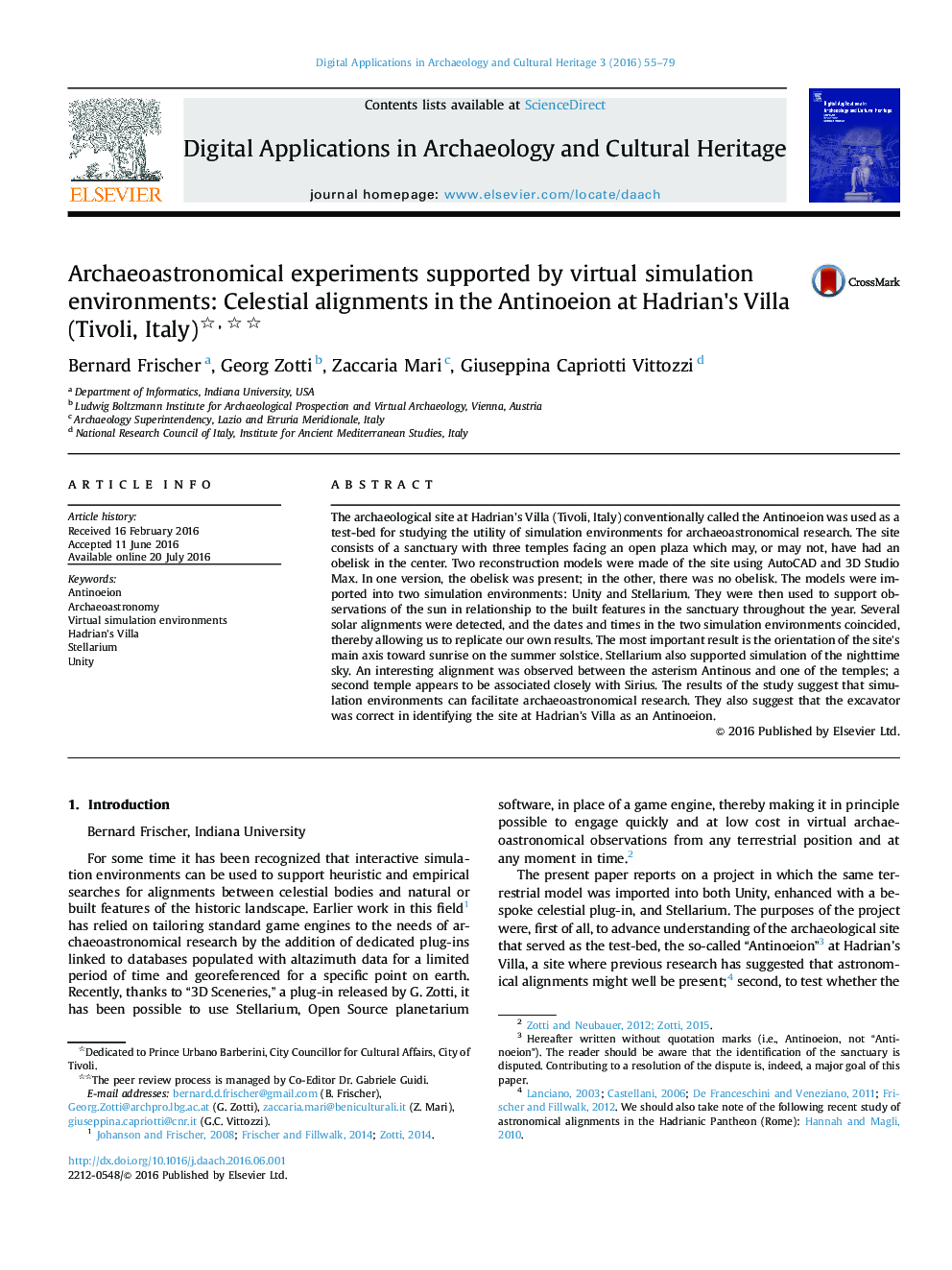| Article ID | Journal | Published Year | Pages | File Type |
|---|---|---|---|---|
| 4761584 | Digital Applications in Archaeology and Cultural Heritage | 2016 | 25 Pages |
Abstract
The archaeological site at Hadrian's Villa (Tivoli, Italy) conventionally called the Antinoeion was used as a test-bed for studying the utility of simulation environments for archaeoastronomical research. The site consists of a sanctuary with three temples facing an open plaza which may, or may not, have had an obelisk in the center. Two reconstruction models were made of the site using AutoCAD and 3D Studio Max. In one version, the obelisk was present; in the other, there was no obelisk. The models were imported into two simulation environments: Unity and Stellarium. They were then used to support observations of the sun in relationship to the built features in the sanctuary throughout the year. Several solar alignments were detected, and the dates and times in the two simulation environments coincided, thereby allowing us to replicate our own results. The most important result is the orientation of the site's main axis toward sunrise on the summer solstice. Stellarium also supported simulation of the nighttime sky. An interesting alignment was observed between the asterism Antinous and one of the temples; a second temple appears to be associated closely with Sirius. The results of the study suggest that simulation environments can facilitate archaeoastronomical research. They also suggest that the excavator was correct in identifying the site at Hadrian's Villa as an Antinoeion.
Keywords
Related Topics
Physical Sciences and Engineering
Computer Science
Computer Graphics and Computer-Aided Design
Authors
Bernard Frischer, Georg Zotti, Zaccaria Mari, Giuseppina Capriotti Vittozzi,
